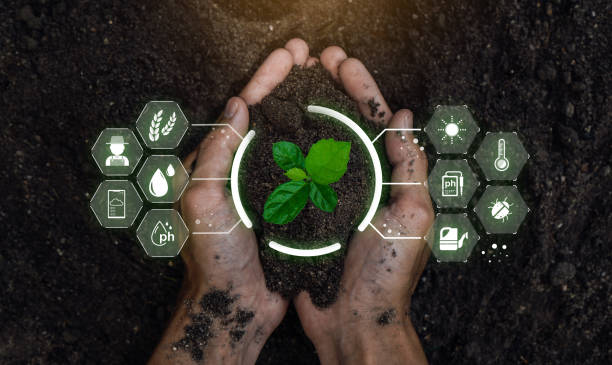Agriculture has always been the backbone of human civilization. But today, farming is no longer just about soil, seeds, and hard labor—it’s becoming smarter, data-driven, and technology-powered. With the rise of Artificial Intelligence (AI) and the Internet of Things (IoT), farmers now have tools that can transform traditional practices into efficient, sustainable systems.
This shift, known as digital farming, is reshaping how food is produced, managed, and delivered. Let’s explore how AI and IoT are changing agriculture and what it means for the future of farming.
What Is Digital Farming?
Digital farming is the integration of advanced technologies into agriculture to improve productivity, sustainability, and decision-making. Instead of relying solely on manual observation, farmers now use real-time data and automated systems to optimize every stage of crop production.
At its core, digital farming leverages two main technologies:
- AI (Artificial Intelligence): Uses algorithms and predictive models to analyze data and make smarter decisions.
- IoT (Internet of Things): Connects physical devices—like sensors, drones, and tractors—to collect and share valuable farming data.
Together, these tools allow farmers to grow more food with fewer resources.
How IoT Is Transforming Agriculture
IoT is at the heart of precision farming, where every detail of crop and soil health is tracked with smart devices.
1. Smart Sensors in the Field
IoT sensors measure soil moisture, temperature, and nutrient levels. This allows farmers to irrigate only when necessary, conserving water and improving crop yields.
2. Drones and Remote Monitoring
Drones equipped with cameras and sensors can scan large fields quickly. They detect crop diseases, pests, and growth patterns, reducing the need for manual inspections.
3. Automated Irrigation Systems
IoT-connected irrigation systems deliver water directly to plants when needed, minimizing waste and supporting sustainable farming.
4. Livestock Monitoring
Wearable devices for cattle and poultry track health, nutrition, and movement, helping farmers ensure animal well-being and detect diseases early.
The Role of AI in Modern Farming
While IoT collects data, AI makes sense of it. By analyzing information from sensors, drones, and weather reports, AI helps farmers make informed decisions.
1. Predictive Analytics
AI models forecast weather conditions, pest outbreaks, and crop yields. This helps farmers prepare in advance and reduce risks.
2. Disease Detection
AI-powered image recognition can spot crop diseases from drone or smartphone images, allowing for quick treatment before problems spread.
3. Precision Farming
AI recommends the right amount of fertilizer, pesticides, and water for each crop section. This reduces costs and improves efficiency.
4. Supply Chain Optimization
AI also helps in logistics—predicting demand, reducing food waste, and ensuring timely delivery of produce.
Benefits of Digital Farming
The adoption of AI and IoT in agriculture comes with significant benefits:
- Higher Productivity: Farmers grow more crops with fewer resources.
- Sustainability: Reduced water usage, optimized fertilizer application, and eco-friendly practices.
- Cost Savings: Less waste and smarter resource allocation lower overall expenses.
- Data-Driven Decisions: Farmers no longer rely only on experience—they have actionable insights.
- Food Security: More efficient farming helps meet the demands of a growing global population.
Challenges to Overcome
While digital farming is promising, it also faces challenges:
- High Costs: Advanced sensors, drones, and AI tools can be expensive for small farmers.
- Connectivity Issues: Rural areas often lack stable internet, limiting IoT applications.
- Data Privacy: Farmers need secure systems to protect sensitive agricultural data.
- Training Needs: Farmers must be trained to use and trust new technologies.
Governments, tech companies, and agricultural institutions need to work together to make digital farming more accessible and affordable.
The Future of Farming with AI and IoT
The future of agriculture lies in smart, connected farms. As AI and IoT evolve, we can expect:
- Fully automated farms with autonomous tractors and robotic harvesters.
- Advanced climate-smart farming to adapt to environmental changes.
- AI-driven solutions that make small farms as efficient as large-scale agribusinesses.
- Global platforms where farmers share data to collectively improve yields.
This future promises sustainable food production that can feed billions while preserving natural resources.
Final Thoughts
Digital farming is more than just a buzzword—it’s a revolution in agriculture. With AI and IoT, farmers are moving away from guesswork and toward precision, efficiency, and sustainability.
For farmers, this means fewer risks, lower costs, and higher yields. For the world, it means greater food security and environmentally friendly farming practices.

